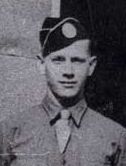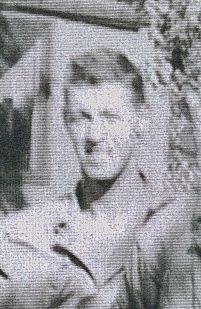17
Reasons Why You Are Free Today:
Here are seventeen men of the LMG platoon that you will never get to meet or thank. They cannot give an account of their time in combat. They paid the ultimate price for your freedom. Others must tell their story for them.
JOHN T. PIERCE, : John Pierce had made it onto the ground on D-Day. He made it to the assembly area for the 2nd Battalion of the 501 PIR. What had assembled of the LMG platoon was deployed among the hedgerows around Les Droueries. Before the day was out, John was hit in head by bullet while looking over the top of one of those hedgerows. He did not die immediately, but survived the night and succumb to his wound on June 7, 1944.
CARL D. HOOBING, 2nd LT. He entered the service from New York. He was a lieutenant for the LMG platoon throughout their training. He was highly respected and liked by the men he led. He was a large strong man by all acounts and had a good amount of discretion. Like John Pierce, he had made it on the ground and to the assembly area on D-Day. He was leading his men against the entrenched Germans at Les Droueries when he was kiilled by friendly fire from the USS Quincy on June 7, 1944. He was lying on the ground next to Bill Cook when the salvo came in. The devastating affect of the barrage killed Hoobing instantly, its shrapnel hitting him in the head. The force of the explosion and shrapnel threw Hoobing on top of Cook. Cook was wounded by the barrage, losing part of a finger, but survived. He was evacuated. They were among several paratrooper casualties from the USS Quincy. 2nd Lt. Carl Hoobing is buried at Colleville-Sur-Mer in France (Plot C, Row 2, Grave 14).
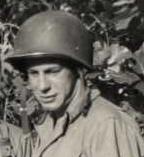
WARD D. FLEISCHMAN, Pfc: From Rushville New York? (archive record indicates NY as place of birth or entry into service?) He was an assistant gunner on Glen Derber's crew. Ward was from New Jersey and wanted to go home when the war was over and buy a 40 acre farm and raise vegetables. He was killed on approach attack to Carentan on June 13, 1944. He was awarded the DSC posthumously for actions performed on June 7, 1944.
Citation reads:
The President of the United States of America, authorized by Act of Congress, July 9, 1918, takes pride in presenting the Distinguished Service Cross (Posthumously) to Private First Class Ward D. Fleishman (ASN: 12208489), United States Army, for extraordinary heroism in connection with military operations against an armed enemy while serving with Headquarters Company, 2d Battalion, 501st Parachute Infantry Regiment, 101st Airborne Division, in action against enemy forces on 7 June 1944, in France. When, during a heavy enemy attack, Private first Class Fleishman's platoon leader and members of the light machine gun crew were killed by the intense enemy fire, Private First Class Fleishman immediately took over and manned the crewless gun. With complete disregard for his own safety, Private First Class Fleishman remained at this gun position and continued to engage the enemy thereby giving his company the necessary time to reorganize and repulse the enemy attack. The outstanding courage and initiative exhibited by Private First Class Fleishman exemplify the highest traditions of the military forces of the United States and reflect great credit upon himself, the 101st Airborne Division, and the United States Army.
Service: Army
Rank: Private First Class
Headquarters, First U.S. Army, General Orders No. 31 (July 1, 1944)
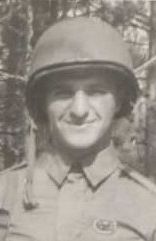
DENVER R. MADDEN, Pfc -
Denver Madden, also from Pennsylvania (Huntingdon County), prooved to be a good soldier. He was awarded the Silver Star for actions in taking out a tank single-handedly using a 60mm mortar tube outside of Carentan in June of 1944. According to fellow platoon members, he was killed by a sniper outside of Bastogne on December 22, 1944.
HENRY SCHWABE - Henry was from Pottstown Pennsylvania. He was born in Germany. His family came to the US when he was around 12 years old. He could speak fluent German and English and retained a German accent. His language skills were a great asset. However, he was apparently not allowed to jump into Normandy as some considered his ______ as too great a risk. He fought in Holland and Bastogne. On January 3rd, 1945, he assisted Charley Eckman in retrieving Harry Coffey from an overrun listening post several hundred yards out in the open in front of the company positions. He lost one of his dog tags in the course of the rescue. He was killed in Alsace on February 22, 1945 by a replacement on guard duty. He received a bronze star and purple heart. He is buried in Epinal (vosges) France (Plot A , row 35, grave 18). Glen Derber related the circumstances of his death which he learned from another platoon memeber: "Cusic was the one who accompanied Schwabe to relieve a replacement who was on guard duty in southern France, after we left Bastogne.....It was in the middle of the night and as the two of them approached the new replacement's position the guy cried out "HALT" and Scwabe replied in his german accent, whereupon the guy shot him. Schwabe sat down next to a tree and told Cusic, "I've been shot!" Cusic checked his pulse and knew immediately he was dead. The new replacement was shipped out the next day for fear of retaliation by one of Schwabes buddies." Schwabe was engaged to a nurse. He had two years of collega and was going to become a forest ranger.
BUSTER E. WILLIAMS, Cpl. - From Oklahoma. He was killed in action in Holland on September 24, 1944 at/near RR crossing.
HARRY L. AMOS, SGT. - Sergeant Amos was from Virginia. He was KIA Bastogne 12-26-44 Goochland co VA 33041379
EDWARD H. PAQUIN, Pvt. - Edward Paquin was from Connecticut. He was killed at Bastogne in December 1944.
HARRY R. ARTINGER, Pfc. - Harry Artinger, from Allagheny county Pennsylvania, had trained with the unit from its inception at Toccoa in 1942. He had survived the Nomandy and Holland campaigns, but was fatally hit by german machinegun fire while heading back from an listening post to the woods Easy company of 2/501 was holding. The listening post was situated in a large depression several hundred yards out from the company in an open field north of Bizory, but south of the area of railroad trackline which had prevoiusly served as the division between the 501 and 506 PIRs. The purpose of the RR track on this occasson was to serve as the battalion's line of departure. The LMG platoon was deployed in support of the companies and partook of the sweep of the Bois Jaques from the south on January 3, 1945. Pelham Noyes, who was manning the LMG with Artinger on the listening post was also shot, but survived. This listening post is the same one which Charley Eckman and Schwabe later ran to recover the combat fatigued Harry Coffey and was frequently under intense enemy fire during the battle on January 3rd. Numerous bodies of the dead, both German and American were in the depression as attested to by Charles Eckman.
ANDREW J. RITCHIE: From Illinois. Killed in the Bastogne Campaign on 1-3-45. He is buried in the Luxemburg Cemetery. Awarded the Bronze star.
THOMAS I MARSHALL, Pfc - KIA 1-3-45 PFC 32954532 new castle co DE.
ROBERT RUTHERFORD, - From NJ, he was a replacement for the casualties in Normandy. Hesurvived the Holland campagne, but was killed in Bastogne. Listed as Service co. 1-5-45.Seminary trajedy explosion.
THOMAS J. RUGGERIO, Pfc. - KIA 6-20-44. buried in Normandy
THOMAS BRAGG, Cpl. - Bragg from Candler County Georgia, died of wounds in Bastogne on December 24, 1944.
BEDFORD S. SHARP(E), Cpl. - KIA Holland?
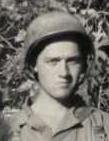
LAWRENCE L. DURKEE. Killed in Holland October 5th, 1944, on "the Island." According to Glen Derber, Durkee was in a slit trench position on the Dike along the (Waal?) River with his gun crew and was firing on Germans down by river. The LMG crew received return mortar fire and Durkee was killed. When the soldiers came to tend the wounded and remove the dead, they found Durkee. There were no marks on body, but he was dead. Derber's LMG crew called up to replace Durkee's crew.
MICHAEL KRILL, Pvt. - Michael Krill was from Union County New Jersey. He died of Wounds on December 1, 1944.
